For many food enthusiasts, grilling is not just about cooking—it’s a cherished pastime that brings family and friends together. Whether you’re firing up juicy burgers for a weekend cookout or slow-cooking ribs in the backyard, having the right BBQ grill makes a huge difference in your culinary results and overall grilling experience. But with so many choices out there—gas, charcoal, pellet, electric, kamado-style, and more—how do you decide which one is best?
In this in-depth guide, we’ll explore the key factors to consider when buying a BBQ grill, from fuel types and materials to cooking capacity, temperature control, and beyond. By the end, you’ll be well-equipped to pick a grill that suits your outdoor cooking style, budget, and entertaining needs.
1. Clarifying Your Grilling Goals and Preferences
a) Frequency and Style of Cooking
- Frequency: Do you plan to grill only on weekends or are you a year-round enthusiast? If you grill often, investing in a higher-quality grill might be worthwhile for durability and performance.
- Style: Are you into quick weeknight meals, or do you enjoy slow smoking briskets and ribs for hours? Different grills excel at different cooking methods. For instance, gas grills heat up quickly for everyday grilling, while charcoal or pellet grills are great for slow-smoked flavor.
b) Flavor Profile
- Charcoal: Many grill lovers swear by the smoky aroma and flavor that charcoal imparts, though it requires more time and effort.
- Gas: Offers a cleaner flavor profile without the smokiness of charcoal or wood.
- Pellet: Burns wood pellets that deliver pronounced smoky flavors and consistent heat.
- Electric: Typically more convenient but doesn’t impart the classic charred flavor that comes from real flames.
Understanding your flavor preferences will narrow down your options among the various fuel types available.
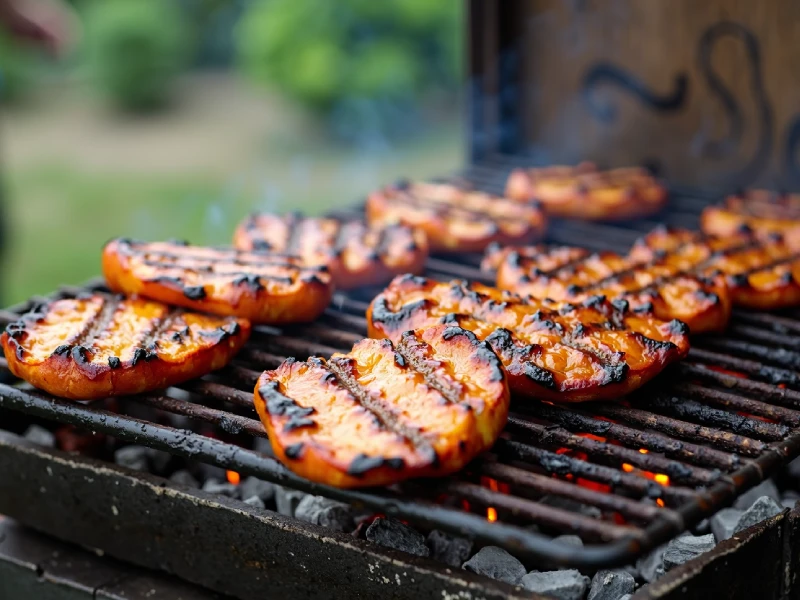
2. Types of Grills: Pros and Cons
a) Gas Grills
Gas grills are extremely popular due to their ease of use, allowing near-instant ignition and simple temperature adjustments via control knobs. They typically run on propane tanks or can be hooked up to a natural gas line if available.
- Pros:
- Quick preheat, often within 10–15 minutes.
- Simple temperature control with multiple burners.
- Minimal ash and less cleanup than charcoal.
- Cons:
- Doesn’t impart as much smokiness as charcoal or pellet.
- May require heavy, costly propane refills or gas line installation.
- Mid- to high-quality models can be more expensive upfront.
Gas grills suit those seeking convenience and consistent performance for standard grilling tasks. They’re great for searing steaks, cooking burgers, and quickly grilling veggies or chicken.
b) Charcoal Grills
Charcoal grills remain a favorite for those chasing the authentic smoky flavor. They use briquettes or lump charcoal to generate heat and can be used for direct (hot) or indirect (slow) cooking.
- Pros:
- Classic smoky flavor prized by many.
- High heat potential for searing.
- Often cheaper entry-level options compared to gas.
- Cons:
- Takes longer to heat up (20–30+ minutes).
- Managing temperature requires practice with vent adjustments.
- Cleaning up ash can be messy.
Charcoal grilling is ideal for cooking purists who enjoy the process of building and controlling the fire. If you savor the ritual and want that deep, grilled flavor, charcoal is hard to beat.
c) Pellet Grills/Smokers
Pellet grills burn compressed hardwood pellets, fed into a firebox by an electric auger. They’re prized for consistent temperature control and set-it-and-forget-it functionality.
- Pros:
- Produces a rich, wood-smoked flavor.
- Automatic temperature regulation, often with digital controllers.
- Great for low-and-slow cooking (ribs, brisket) and general grilling.
- Cons:
- Higher cost for the unit and pellets compared to charcoal or gas.
- Requires electricity for the auger and controller.
- Not as high a maximum temperature as some gas or charcoal grills (though some newer models can sear well).
Pellet grills are perfect for enthusiasts who want the convenience of an electric system with the flavor depth of wood smoke. They’re especially popular with barbecue fans who relish long smoke sessions.
d) Electric Grills
Electric grills simply plug into an outlet, heating grilling plates or elements. They’re popular in condos or areas with restrictions on open flames.
- Pros:
- Very convenient—no charcoal, pellets, or gas tanks needed.
- Suitable for small balconies or indoor/outdoor scenarios (where allowed).
- Typically easy to clean with removable grilling surfaces.
- Cons:
- Less authentic grilled flavor—no real smoke or flame.
- Limited heat output.
- Requires a stable power supply and suitable outlet.
If you have limited outdoor space or face regulatory constraints on open fires, an electric grill can be a decent compromise to still enjoy grilled foods.
e) Kamado Grills
Kamado-style cookers (e.g., Big Green Egg, Kamado Joe) are egg-shaped ceramic grills that excel at both high-heat grilling and low-and-slow smoking.
- Pros:
- Excellent heat retention and fuel efficiency due to ceramic walls.
- Versatile for searing steaks, baking pizzas, smoking ribs.
- Imparts wonderful charcoal/wood flavor.
- Cons:
- Typically expensive and heavy.
- Learning curve in controlling airflow for temperature.
- The ceramic can crack if dropped or heated unevenly (though they’re generally quite durable).
Kamado grills are beloved by serious BBQ enthusiasts who appreciate multi-functionality and top-tier flavor potential.
3. Grill Size, Cooking Area, and Footprint
a) Cooking Area
When comparing grills, always check the primary cooking surface area in square inches. Think about how many people you regularly cook for:
- A smaller grill (200–400 sq. in.) might suffice for 2–4 people.
- Medium-sized grills (400–600 sq. in.) are great for families of 4–6.
- Larger grills (600+ sq. in.) can handle bigger parties or batch cooking.
Keep in mind whether you’ll also want a warming rack or extra side burners for cooking side dishes. If you regularly host gatherings, more space is beneficial.
b) Dimensions and Footprint
Assess how much patio or backyard space you have. Gas grills with side tables or extended shelves can be quite wide. Make sure you have enough clearance from walls, fences, or other structures for safe operation and ventilation. If you have a small balcony or deck, a compact model or portable grill might be more suitable.
c) Portability
If you plan to move your grill around—say, taking it camping or tailgating—look for portable grills with foldable legs, compact form factor, or built-in wheels. Some stand-alone grills can be heavy and awkward to relocate, while certain tabletop or collapsible models are specifically designed for travel.
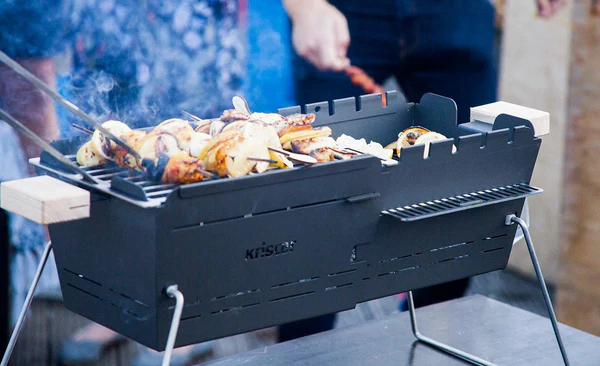
4. Construction and Material Quality
a) Body and Lid Construction
A sturdily built grill will last longer and hold heat more effectively. Popular materials include:
- Stainless Steel: Resists corrosion and looks sleek, but quality can vary. Look for 304-grade stainless steel in higher-end models.
- Cast Aluminum: Lightweight yet durable and retains heat well in some gas grill designs.
- Porcelain-Enameled Steel: Common in mid-range grills—resistant to rust, though the enamel can chip if mishandled.
Check for thick, well-insulated lids. A heavier lid often indicates better heat retention, especially for slow cooking and smoking.
b) Grates and Cooking Surfaces
The cooking grates directly contact your food, so their material matters for heat transfer and cleaning:
- Cast Iron: Great heat retention and searing capabilities. Often porcelain-coated to prevent rust, but they require some care to maintain seasoning.
- Stainless Steel: Rust-resistant and easier to clean. Heavier-grade stainless steel grates hold heat well.
- Porcelain-Enameled Steel: Reasonable performance, easy to clean, but can chip over time.
Opt for heavier, well-built grates if you prioritize strong sear marks and consistent heat distribution.
5. Temperature Control and Heat Distribution
a) Burners (for Gas Grills)
- Number of Burners: More burners allow separate heat zones for direct and indirect cooking. A minimum of two burners is recommended for flexible grilling techniques (one side hot, the other cooler).
- Burner Material: Stainless steel or brass burners often last longer than cheaper cast iron burners.
- BTU Rating: Indicates heat output. Higher BTUs mean potential for higher temps, but overall design and efficiency also matter.
b) Airflow and Vents (for Charcoal and Kamado Grills)
Heat control in charcoal and kamado grills depends on adjustable air vents (dampers). Look for designs that let you finely tune airflow. Kamado grills with well-made gaskets and tight seals can maintain a stable temperature for hours on minimal fuel.
c) Hot Spots
Some grills suffer from uneven heat, causing hot or cold spots. Good design with flame tamers or well-placed deflectors helps distribute heat more uniformly. Reading user reviews or checking brand reputation can hint at whether a particular grill struggles with heat distribution.
6. Additional Features and Accessories
a) Side Burners, Sear Stations, and Rotisserie Kits
- Side Burners: Handy for heating sauces or side dishes without leaving your grill station.
- Sear Station/Infrared Burner: Reaches very high heat quickly, ideal for locking in juices on steaks.
- Rotisserie Attachment: Great for roasting whole chickens or roasts evenly. Some premium grills come with built-in rotisserie systems.
b) Built-in Thermometers and Wi-Fi Controls
An accurate lid thermometer is helpful, but serious grillers may rely on a separate digital probe for precise readings. Some advanced pellet grills offer Wi-Fi/Bluetooth connectivity, allowing you to monitor and adjust temperatures via a smartphone app. If you like high-tech solutions, these features can be a game-changer.
c) Storage Space and Shelves
Look for side shelves or cabinets to hold utensils, spices, or trays. Some grills provide enclosed carts with doors to hide the propane tank or store charcoal and wood chips. If you’re short on storage, such integrated solutions can be appealing.
d) Ash Removal and Grease Management
- Ash Cleanup: Charcoal models with an ash catcher or removable tray simplify disposal.
- Grease Trays: Gas and pellet grills typically have a grease management system. Check if the drip pan is easy to remove and clean, preventing messy, clogged lines.
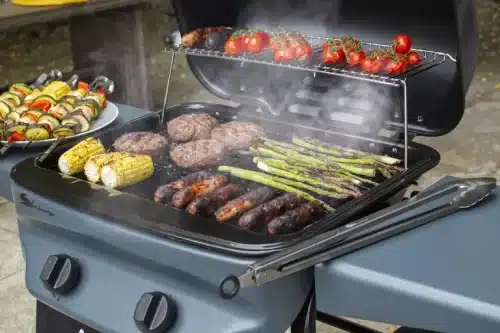
7. Maintenance and Cleaning
a) Routine Maintenance
Each grill type demands different upkeep:
- Gas: Periodically clean burner tubes and check for blockages. Inspect hoses for leaks.
- Charcoal: Clear ash from the firebox, brush out leftover briquettes or lumps.
- Pellet: Empty the hopper if you won’t use it for a while, vacuum out sawdust and ashes.
- Electric: Wipe down the heating element area after it cools, ensure no grease accumulations around electrical parts.
b) Cleaning Grates
Invest in a high-quality grill brush or scraper to remove food residue. Cast iron grates may need occasional re-seasoning. Porcelain-enameled or stainless steel grates should be brushed gently to avoid damaging the coating.
c) Cover and Weather Protection
Harsh weather can corrode metal parts or fade surfaces, so a durable grill cover is recommended. Storing your grill in a sheltered spot (e.g., under a patio cover or in a garage) during extreme conditions prolongs its life.
8. Budgeting and Price Ranges
Grill prices vary widely, from under $100 for basic portable charcoal units up to $3,000+ for premium gas or kamado models. When determining your budget, weigh:
- Frequency of Use: If you grill often, a pricier, more durable model might pay off in the long run.
- Desired Features: More burners, side burners, and advanced technology bump up the cost.
- Long-Term Durability: Spending more on stainless steel construction and better burners could save you from replacing a cheaper grill every few years.
A mid-range grill ($300–$700) often hits a sweet spot for decent build quality, multiple features, and reliable performance.
9. Brand Reputation and Warranty
When investing in a grill, a reputable brand with good customer support can be reassuring. Companies like Weber, Napoleon, Char-Broil, Traeger, Kamado Joe, and Big Green Egg have distinct track records. Look at:
- Warranty Length: Some top-tier models have up to 10 years on certain parts.
- Availability of Replacement Parts: Burners, grates, or igniters may wear out. A brand with easy-to-find spares extends your grill’s lifespan.
- Customer Service: Check user reviews about how well the manufacturer handles complaints or warranty claims.
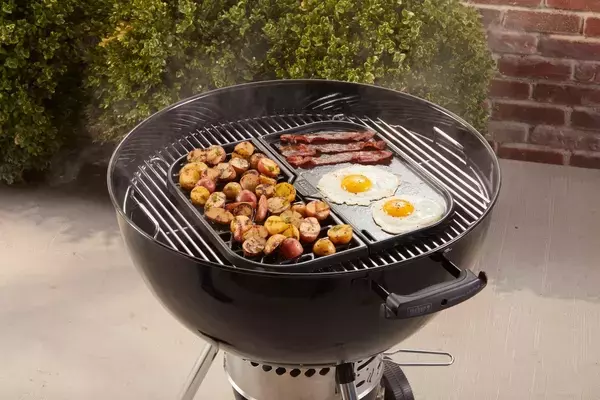
10. Safety Considerations
a) Sturdy Construction
A well-built grill with stable legs or cart reduces the risk of tipping. Check that handles remain cool and lids have secure hinges. For gas grills, confirm the regulator and hoses are in good condition. Regularly test for leaks using soapy water around connections.
b) Proper Ventilation
Grilling requires adequate ventilation. Never operate gas or charcoal grills in enclosed spaces like garages. Even pellet and electric grills can pose a fire hazard if placed too close to flammable materials. Follow recommended clearance guidelines in the manual.
c) Fire Extinguisher and Tools
Keep a fire extinguisher or baking soda on hand for flare-ups. Use proper grilling utensils with long handles to reduce burn risk. Wear heat-resistant gloves for adjusting vents or flipping foods over high heat.
11. Environmental Impact
a) Fuel Choices
- Propane/Natural Gas: Burns relatively clean but relies on fossil fuels.
- Charcoal: Many prefer lump charcoal over briquettes if they want fewer additives. Some briquettes are also made from coconut shells or more eco-friendly materials.
- Pellets: Typically made from sawdust or wood byproducts.
- Electric: Local electricity sources might come from fossil fuels or renewables—energy footprint varies by region.
b) Eco-Friendly Practices
Minimize waste by reusing leftover charcoal (if it’s still in good shape). Dispose of ashes properly in a metal container after they’ve fully cooled. And consider a grill with efficient heat retention, requiring less fuel overall.
12. Trying Before Buying: Showrooms and Reviews
If possible, visit a showroom or demonstration event. You can see grill construction up close, test how sturdy the lid feels, and get a sense of the grill’s height and features. Online reviews from real users and professional BBQ websites are valuable resources for identifying consistent pros and cons across models.
13. Future-Proofing Your Purchase
a) Expandability
Some grill systems offer expansions—like different cooking grates, smoker attachments, or specialized sear plates. If you anticipate growing your BBQ repertoire (e.g., exploring rotisserie cooking or pizza making), check if the brand ecosystem accommodates these additions.
b) Resale Value
High-end grills from reputable manufacturers sometimes retain better resale value if you upgrade or move. This might matter if you foresee relocating or wanting to trade up for a more advanced model down the line.
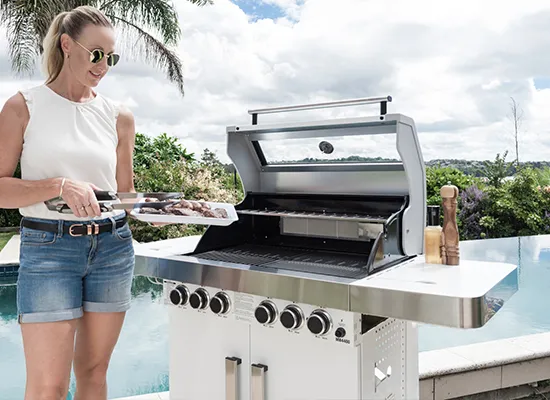
14. Checklist for Choosing the Right Grill
- Grill Type: Gas, charcoal, pellet, electric, or kamado—based on flavor preference, convenience, and cooking style.
- Size and Cooking Area: Enough room for your usual crowd, plus any entertaining.
- Material and Build Quality: Durable chassis and lid, sturdy grates for reliable heat retention.
- Temperature Control: Number of gas burners, vent design for charcoal, or digital controls for pellet.
- Extra Features: Side burners, sear station, rotisserie, Wi-Fi connectivity, etc.
- Cleaning and Maintenance: Grease trays, ash removal systems, ease of disassembly.
- Budget: Balancing initial cost with expected durability and features.
- Brand Reputation and Warranty: Check user feedback, official support, and availability of parts.
- Safety and Regulations: Ensure your grill is placed safely and used according to local codes.
- Long-Term Needs: Potential expansions or resale considerations.
15. Conclusion
Buying a BBQ grill is a significant investment that can greatly enhance your outdoor cooking lifestyle. Whether you envision quick weeknight burgers on a gas grill or dream of meticulously smoked brisket using charcoal or pellet fuels, the right grill choice is all about aligning with your personal taste, cooking habits, and space constraints.
Begin by clarifying your favorite cooking style and frequency, then weigh fuel types—gas for convenience, charcoal for flavor, pellet for consistent smoking, electric for restricted spaces, or kamado for versatility. Next, focus on the grill’s size, build materials, heat control features, and any extras (like side burners or rotisserie kits) that might make your backyard barbecues more enjoyable. Don’t forget to factor in routine cleaning, brand warranties, and any local safety regulations before finalizing your purchase.
When you take the time to choose a grill that aligns with your culinary goals and environment, you’ll find that the rewards are plentiful: mouthwatering meals, memorable gatherings, and the simple joy of cooking outdoors. With the key considerations above in mind, you’ll be well on your way to picking the perfect BBQ grill to serve up sizzling, smoky feasts for seasons to come. Fire it up, and happy grilling!
